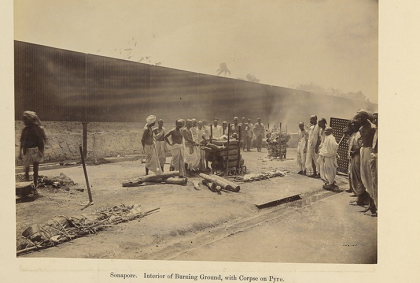
The third plague pandemic reached India first at Mumbai port city by maritime traffic of ships & steamers from British Hong Kong in 1896 AD. It spread from Mumbai to Gujarat, Maharashtra, Karnataka & Sindh (now in Pakistan) provinces of the Bombay Presidency in 1897 AD.
The rapid growth of Mumbai's commerce led to a large influx of workers. In the 1891 census the population of Mumbai was counted to be 820,000. Most of the immigrant workers (over 70%) lived in chawls. The city services were not geared towards the well-being of the working class.
Overcrowded Mumbai was ideal place for spread of plague. In September 1896 the first case of bubonic plague was detected in Mandvi area of city. It spread rapidly to other parts of the city, and the death toll was estimated at 1,900 people per week through the rest of the year.
Dr.Acacio Gabriel Viegas was a Govenese medical practitioner who was credited with the discovery of the outbreak of bubonic plague in Bombay, India, in 1896. His timely discovery helped save many lives in the city and was credited with the inoculation of 18,000 residents.
Many people fled from Mumbai at this time. Dr.Viegas correctly diagnosed disease as bubonic plague and tended to patients at great personal risk. He was also President of Bombay Municipal Corporation. He then launched a vociferous campaign to clean up slums and exterminate rats.
In 1896 major population of Mumbai was Gujarati people who developed Mumbai.Many Gujarati people fled from Mumbai to their native cities/towns/villages of Gujarat when plague pandemic broke out in Mumbai.They spread plague in Gujarat province of Bombay Presidency in 1896-97 AD.
The third plague pandemic, which was brought from Hong Kong to British India in 1896 AD, killed about 1 million (10 Lakh) in India. It later also killed another 12.5 million (1.25 Crore) in British India over the following thirty years up to 1926 AD.
124 years old photos of disinfecting plague houses by flushing engine in Mumbai during pandemic the Bombay Plague of 1897. 



124 years old photo of soldiers of the British Army on plague duty in Mumbai during the pandemic the Bombay Plague of 1897. 

124 years old photo of medical inspection of a rail passenger at a Mumbai railway station during pandemic the Bombay Plague of 1897. 

124 years old photo of plague victims on the footpath in Mumbai during the pandemic of the Bombay Plague of 1897. 

124 years old photo of digging of grave for plague victim in Hindu Burial Ground on Haines Road in Mumbai during pandemic the Bombay Plague of 1897.
( Some Hindu communities have custom to bury their dead)
( Some Hindu communities have custom to bury their dead)

124 years old photo of cremation of dead bodies of plague victims at a crematorium of Mumbai during pandemic the Bombay Plague of 1897. 

• • •
Missing some Tweet in this thread? You can try to
force a refresh








